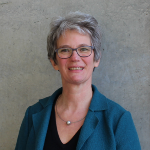Artists such as Hans Baldung Grien or Albrecht Altdorfer produced autonomous drawings that did not serve as pereparatory scetches for another artwork. Thus - after the spread of printmaking in the 15th century - a new visual medium emerged. This media-historical dimension is the focus of the project.
In this context, the following questions are of particular interest:
- Many autonomous drawings are conspicuous for their experimental formal language: they not infrequently impose an exuberant calligraphy, strange perspectives and enigmatic motifs on the viewer. What compositional and narrative strategies the artists were pursuing here needs to be investigated in more detail.
- The preferred medium of the autonomous drawings are chiaroscuro drawings. What potential this type of drawing offered the artists and how they used it is being investigated by the research network on drawings in chiaroscuro on coloured primed papers in Upper Germany around 1500, consisting of art historians and restorers.
- The autonomous drawings were mainly prepared in the Upper German region. They are much rarer in Italy, although the revaluation of the visual arts and the artists there, as well as the development of the disegno theory in particular, must have favoured the establishment of autonomous drawings. This paradoxical finding was the subject of a conference held in spring 2016 at the Art History Institute in Florence / Max Planck Institute entitled "Beyond the disegno? The emergence of independent drawings in Germany and Italy".
- In the first half of the 20th century, research on German drawings around 1500 was strongly influenced by the political context as well as by little questioned figures of thought in drawing research. For this reason questions arise such as: On what implicit basic assumptions is drawing research built? How, when and why does the notion arise that drawings are an expression of the artist? Is the paradigm of expression an adequate model for art around 1500? What is its context in the history of science?

Daniela Bohde
Univ.-Prof. Dr.Professor of Premodern (before 1800),
Head of research network on drawings in light and dark
[Image: Institut für Kunstgeschichte | Universität Stuttgart]


